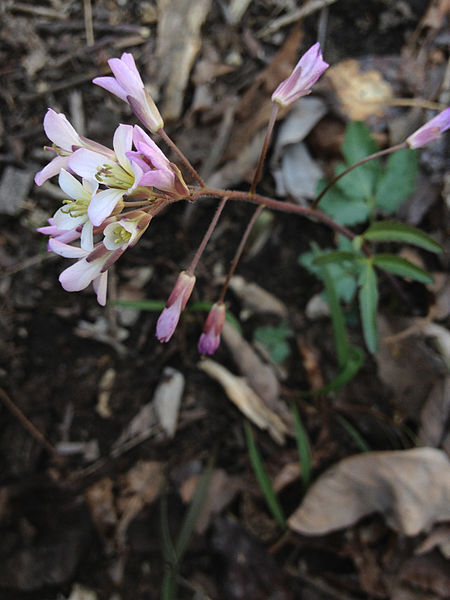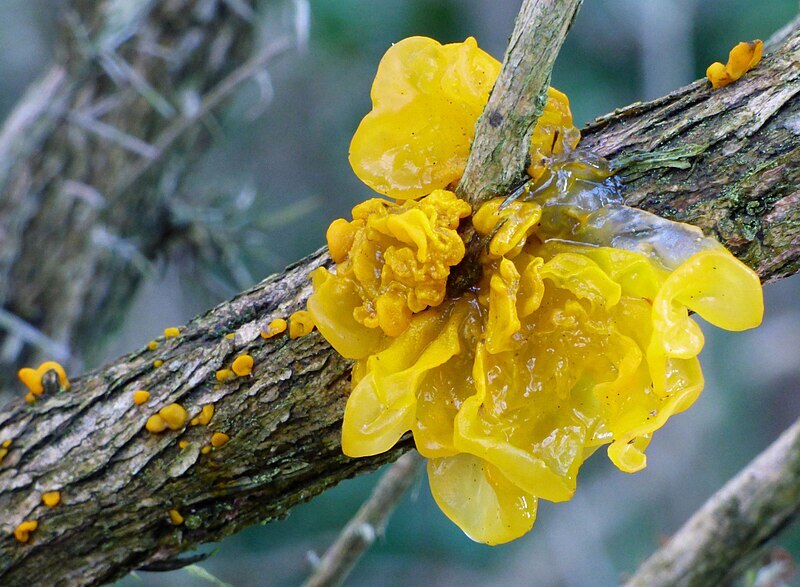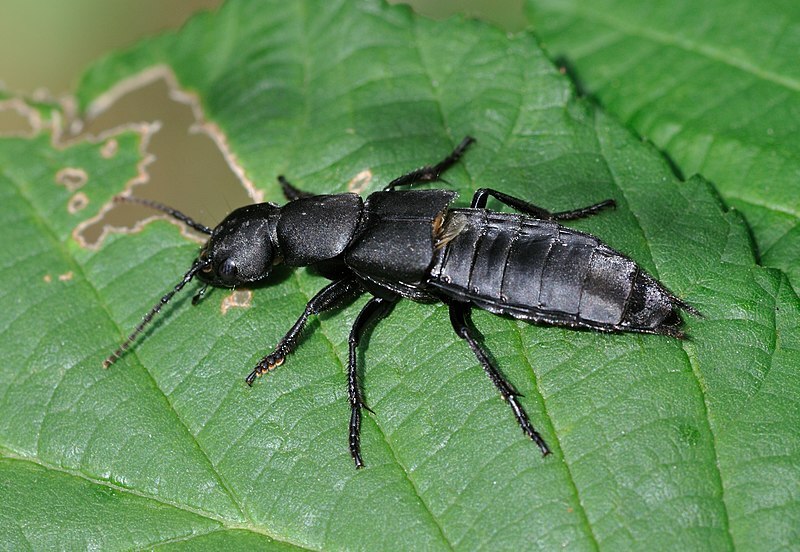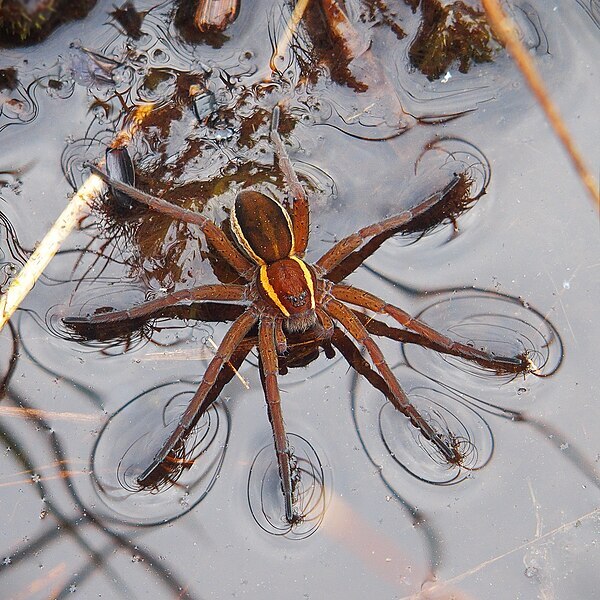Spooky Species
It’s Halloween! So, let's explore some of Somerset’s spookiest species...
Appearing from the depths
Some of the most grim-sounding species lie right at our feet!
 Image Credit: WikiMedia Commons by Fritzflohrreynolds.
Image Credit: WikiMedia Commons by Fritzflohrreynolds.
The common toothwort, nicknamed the corpse flower, can survive for years underground. In folklore, it was said that toothwort would only grow above the place a body had been buried. Rows of pinkish-white flowers which resemble two rows of teeth give the plant its name. The flowers are the only part of the plant to appear above ground, emerging just briefly in the spring.
Toothwort completely lacks chlorophyll and is unable to create any energy for itself. Instead, it parasitises the hazel, sapping energy from the roots of its host.
Common toothwort can be found at Kings Castle Wood (near Wells) and Jan Hobbs, in the Blackdown Hills. Bear in mind, though, that these nature reserves are not accessible by road and the flowers themselves are hard to spot.
There are several species of fungi that might give you a fright. Wonder into a broadleaved woodland, especially where beech trees are present, and you might stumble across some dead man’s fingers! These creepy looking ‘fingers’, formed from the fruiting body of the fungi, appear to reach up through moss and dead leaves.
 Image Credit: WikiMedia Commons by Gail Hampshire
Image Credit: WikiMedia Commons by Gail Hampshire
Another ‘wicked’ example is yellow brain fungus, sometimes known as witches’ butter. It is a parasitic jelly fungus which feeds on fungi that feed on dead wood, particularly gorse. Aptly named, its convoluted structure resembles a brightly coloured brain.
According to legend, finding witches’ butter on your door frame or gate meant a witch had cursed your home. The only way to break the spell was to puncture the fungi and drain its juices.
Somerset’s woodlands are wonderful places to find these and other fascinating fungi. Visit the Woodland Trust website to find a woodland near you.
What the devil?
Devil’s-bit scabious, from the Latin ‘scabere’ (to scratch), was traditionally used to treat skin conditions like scabies and plague sores. The plant has distinctive short flat-edged roots and legend has it that they were bitten off by the devil.
Rich in pollen, the devil’s-bit scabious attracts bees, butterflies, moths, and hoverflies. It is a particularly important food source for the fritillary butterfly, which suffered a drastic decline in Somerset in the last few decades.
You can spot the purple pom-pom flower heads of the devil’s-bit scabious along riverbanks and in marshes between July and October.
 Image credit: WikiMedia Commons by Quartl
Image credit: WikiMedia Commons by Quartl
Another devilish species is the devil’s coach horse beetle – a ruthless predator, coming out after dark to prey on other invertebrates with its large pincer-like jaws. When threatened, it curls up its rear like a scorpion and emits a foul-smelling liquid from its abdomen.
Many myths and superstitions have surrounded the devil’s coach-horse beetle since the Middle Ages. Some said it had the ability to curse a person by pointing its upraised body in their direction; others believed it had magic powers!
Despite its fiendish name the devil’s coach-horse is a beneficial insect. As a dominant predator, it plays an important role in the food chain, helping nutrients to be recycled and returned to the soil.
Devil's coach horse beetles can often be found in gardens under stones and in compost heaps, along hedgerows and in grassland.
Find out more about the devil’s coach horse beetle and other fantastic creepy crawlies on Buglife’s website.
Magical marshlands
Ever heard of Will-o’-the-wisp? This mysterious misty glow that can sometimes be seen over marshes and swamps is likely caused by the gases emitted from plants decaying in damp conditions, but the phenomenon gave rise to a rather sinister story. The glow was said to come from the lantern (wisp) of an evil blacksmith (named Will) who roamed the earth as a ghostly presence and used his lantern to lure weary travellers into danger. The tale echos that of the Irish Jack-o’-lantern made famous by the tradition of pumpkin carving.
Thankfully, Somerset provides us with plenty of magical marshes, that can be enjoyed in the hours of daylight.
The Avalon Marshes (near Glastonbury) is one of the largest lowland wetlands in Britain. Here you can explore several excellent nature reserves. These are particularly good to visit from autumn to spring, as flocks of migratory birds stop by for a visit.
Steart Marshes (near Bridgewater) is a pioneering new nature reserve. The salt marshes provide important feeding places for many birds and fish, while also creating a natural buffer against the sea to protect homes and businesses against the worst storms and tides.
Feel your spider sense tingling
Somerset has 60% of Great Britain’s nationally scarce spider species, with 138 ‘rare species’ and ‘species of conservation interest’ having been recorded. This includes 18 species of spider that are considered vulnerable to critically endangered.
Spiders may not be everyone’s cup of tea, but they are an important part of our ecosystem, helping to control insect populations. They also have some ingenious ways of catching their prey.
 Image credit: WikiMedia Commons by Ocrdu
Image credit: WikiMedia Commons by Ocrdu
The raft spider lives around ponds and ditches and uses surface tension to head out onto the water to hunt. The wolf spider pounces on its prey just like a wolf. Woodlice spiders have jaws perfectly suited to puncture the armour of their only prey – you guessed it, woodlice! Garden spiders weave intricate webs to trap flying insects, such as flies, wasps and butterflies, which they then paralyse with a bite and then wrap up in a cocoon of silk – a spider version of a packed-lunch!
The British Arachnological Society has downloadable factsheets on common UK spider species.
Coming out of the shadows
The association with bats and Halloween perhaps began with the Celtic festival of Samhain, also celebrated on October 31st. Celtic tribes used to light bonfires to mark the festival and the light from these fires attracted moths and other flying insects, which in turn drew bats. Celts believed bats to be the spirits of their ancestors, so watching them feast on the minibeasts as they darted in an out of the shadows must have been a sight to behold.
Somerset is one of the best counties for bats, home to 16 of Britain's 18 bat species, including the grey long-eared bat, lesser horseshoe and greater horseshoe, and the common and soprano pipistrelle.
 Image: WikiMedia Commons by Lylambda
Image: WikiMedia Commons by Lylambda
Bats play a crucial role in our ecosystems helping to regulate insect populations. However, changes in land use over the past few decades have led to habitat loss, fragmentation, and the destruction of bat roosts. Bats have also been affected by light pollution and the use of pesticides. It is estimated that the number of greater horseshoe bats declined by over 90% in the 20th century!
Most of Somerset's greater horseshoe bat roosts are in the new Mendip ‘super’ National Nature Reserve. This area is essential to the greater horseshoe population in the UK, with plenty of species-rich grassland and invertebrate prey.
Visit the Somerset Bat Group website to download factsheets on Somerset’s bats and hear their calls.
Discover more about how we can support greater horseshoe bats in this video from Mendip Hills National Landscape.
Loving the species we love to hate
As we explore these unsettling myths and legends, it is clear to see that humans have long held a fascination and healthy respect for the natural world. Delving a little deeper, we see how important these spooky species are, each contributing to a healthy, interconnected ecosystem. We can also see that many of these species face an uncertain future and need our help to recover and thrive.
Somerset Council, in collaboration with Somerset Local Nature Partnership, is currently working on a Local Nature Recovery Strategy (LNRS) for Somerset to provide a single vision for nature recovery and set out our local priorities and opportunities for nature. Work on the strategy is progressing well and has involved working closely with numerous stakeholders, (including readers of SEEN) who have helped shape the strategy.
Click here to read a progress update
